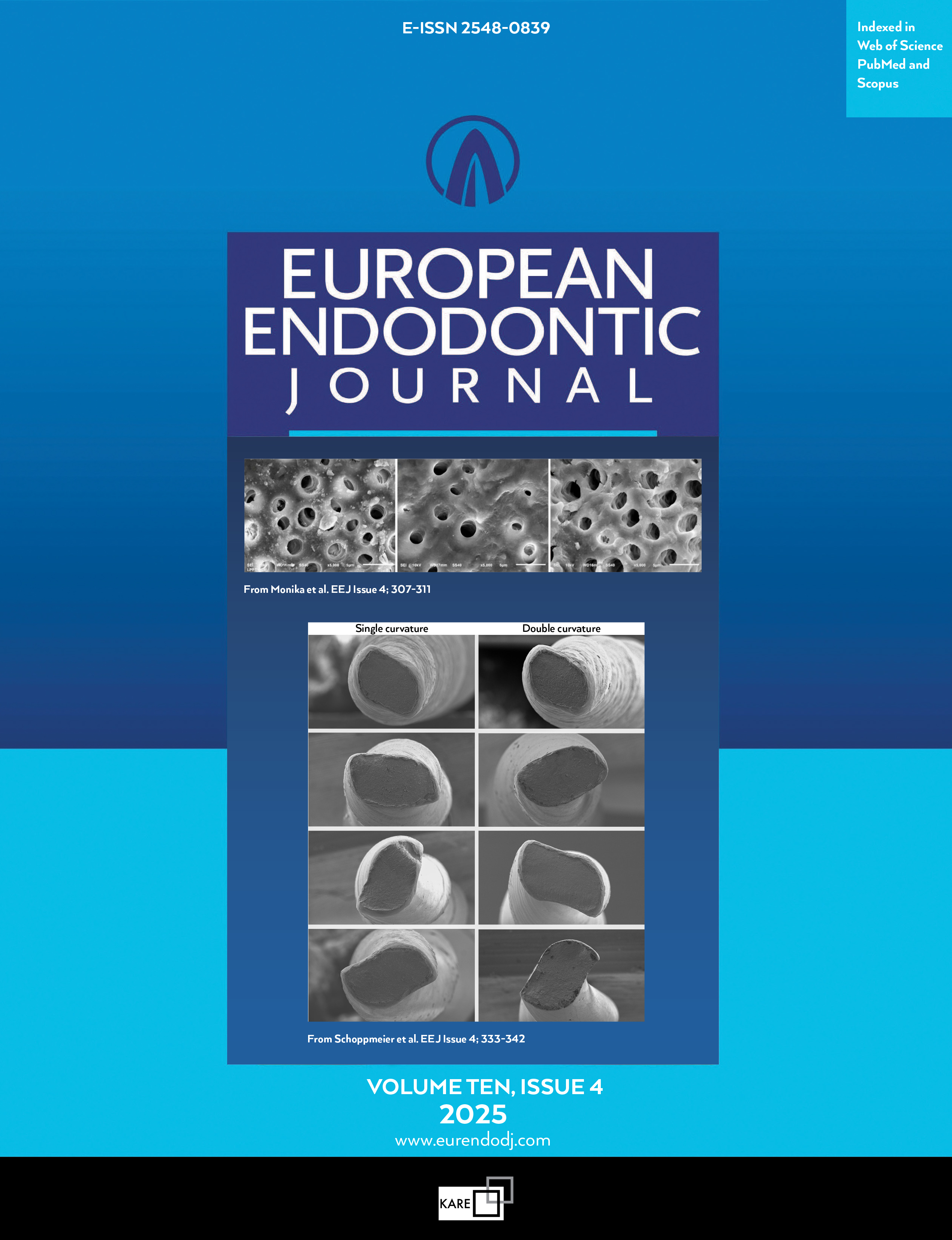Metrics
2024 IMPACT FACTOR
5 year Impact Factor
Eigenfactor Score
2024 CiteScore
Journal Citation Reports
(Clarivate 2025, JIF Rank)
Impact of Multiple Individualized Guides on the Management of an Obliterated Root Canals in a Maxillary First Molar A Case Report
Helder Fernandes de Oliveira, Bruna Ribeiro Gobbi, Alline Soares Vaz, Iussif Mamede Neto, Orlando Aguirre GuedesDepartment of Endodontics, University of Anápolis, School of Dentistry, Anápolis, Goiás, BrazilThis report evaluated the impact of using multiple individualized endodontic access guides in the management of obliterated root canals in maxillary molars. A 70-year-old female patient presented with pain in the upper left first molar. Intraoral examination revealed an extensive composite resin restoration, with no signs of tooth mobility or marginal periodontal disease. The clinical diagnosis was symptomatic apical periodontitis. Cone beam computed tomography (CBCT) revealed a hypodense area in the mesiobuccal (MB1) and palatal (P) roots, associated with signs of apical periodontitis and obliterations in the cervical and middle thirds of the MB1, MB2 and P canals. Due to the high risk of perforation, a guided approach to the canals was selected. Multiple guides were designed using digital planning software, combining CBCT images with intraoral scanning. Access cavities were created using a 25 mm long, 1.0 mm diameter surgical bur. After gaining access, the canals were instrumented, medicated with calcium hydroxide for 15 days, and obturated. Six months post-treatment, the patient remained asymptomatic, and the clinical results were considered satisfactory. (EEJ-2025-01-06)
Keywords: Apical periodontitis, cone beam computed tomography, guided endodontics, pulp canal obliterationManuscript Language: English


